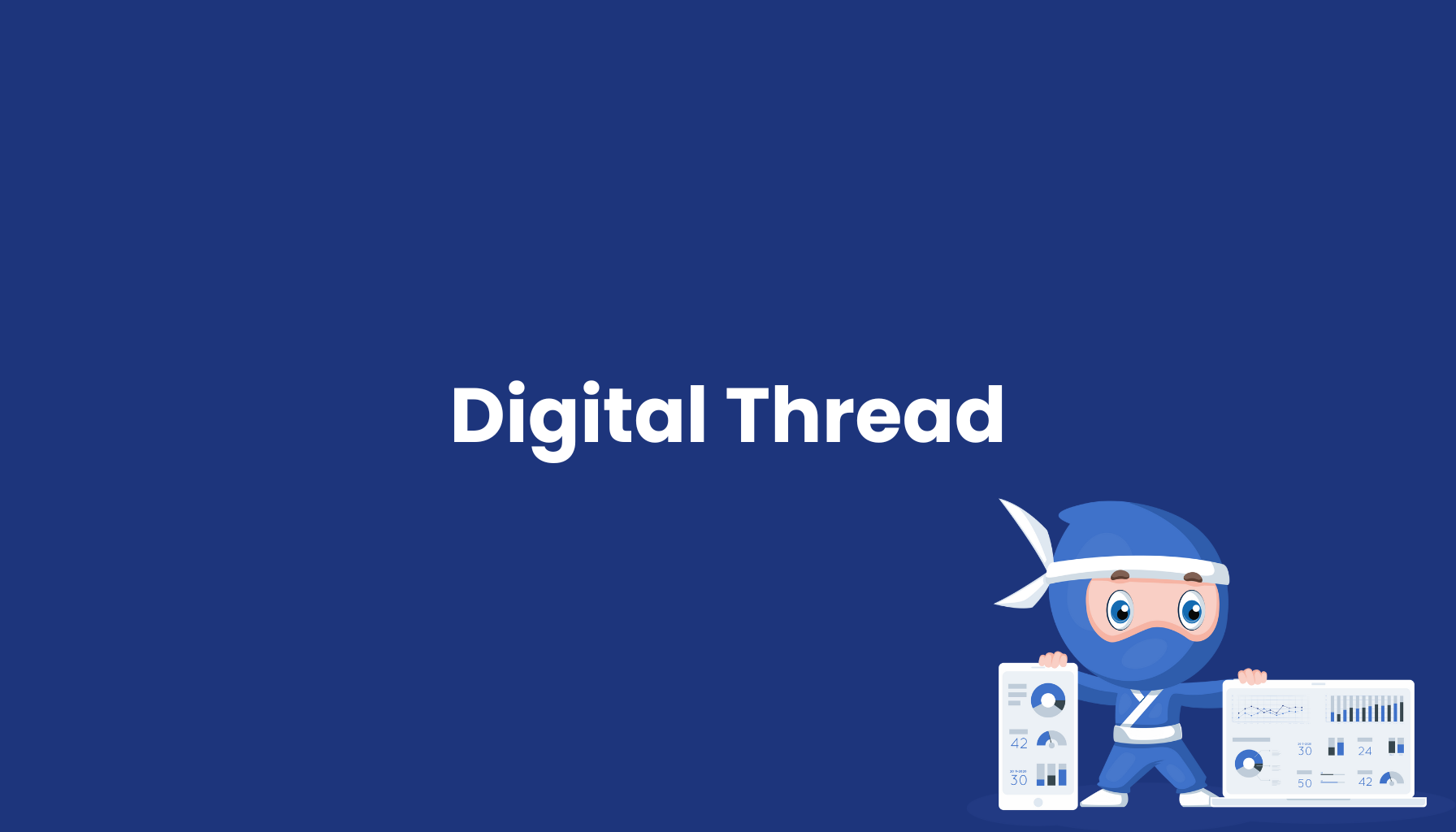Digital Thread

What is Digital Thread?
Digital Thread refers to the seamless connection and utilization of data across the entire product lifecycle—from development through production to maintenance. It aims to create a unified data foundation that links all phases, optimizing processes and enhancing decision-making.
Example: An aerospace company uses a Digital Thread to link design data with production data, improving the precision of aircraft component manufacturing.
Benefits of Digital Thread
-
Transparency: Unified data access across all lifecycle phases fosters collaboration.
-
Efficiency: Connected data enables faster decisions and reduces delays.
-
Quality: Data consistency minimizes errors and enhances product quality.
-
Traceability: Continuous data supports seamless traceability for audits or analysis.
-
Innovation: Access to data drives the development of new products and processes.
Applications in the Manufacturing Industry
Digital Thread is used in data-intensive industries, including:
-
Aerospace Industry: Connected data links design, manufacturing, and maintenance to optimize the production of complex components.
-
Automotive Industry: Data integration improves collaboration between development and production for customized vehicles.
-
Machinery Industry: Continuous data supports the development and manufacturing of precise machines.
Example: An automotive manufacturer uses a Digital Thread to synchronize design data with production, enabling faster implementation of changes.
How Does an MES Support Digital Thread?
A Manufacturing Execution System (MES) contributes to the Digital Thread by:
-
Data Integration: Links production data with other systems (e.g., ERP or PLM) to create a unified data foundation.
-
Real-Time Data Collection: Captures machine and process data in real time for up-to-date insights.
-
Transparency: Dashboards provide access to production data relevant to the Digital Thread.
Example: SYMESTIC’s cloud-native MES supports an aerospace supplier by integrating real-time production data with design data, making the manufacturing of engine components more precise and traceable.
Frequently Asked Questions (FAQs)
What’s the Difference Between Digital Thread and Digital Twin?
A Digital Thread connects data across the entire product lifecycle, while a Digital Twin is a real-time virtual representation of a physical object.
What Challenges Are Faced in Implementing a Digital Thread?
Challenges include integrating diverse systems, ensuring data security, and high initial investments. A cloud-native MES like SYMESTIC’s simplifies implementation with flexible data integration.
Conclusion
Digital Thread enables seamless data connectivity across the product lifecycle, boosting efficiency and quality in manufacturing. With the right technology, such as a cloud-native MES, companies can fully leverage the benefits of connected data. Explore more about integrated manufacturing solutions!


